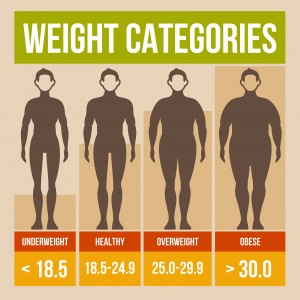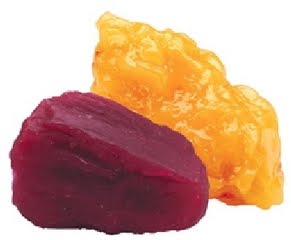Okay, I did it. Now what does it mean?
 Congratulations on keeping it real with your T School Fat Loss Assessment. This primer is to explain the assessment tests and put your personal results into context.
Congratulations on keeping it real with your T School Fat Loss Assessment. This primer is to explain the assessment tests and put your personal results into context.
Although some people can measure their weight loss by the way they feel and look: firmer thighs, a smaller waist, jiggle-free arms, to define your goals and see progress, we need to look for more concrete milestones by which to track our progress.
There are many measurements to go by (pounds, pant size, inches), but not all are created equal. So, which figures say the most about your own figure?
If you are someone who gasps when the scale shows a one or two pound weight gain (“I haven’t cheated at all. How could I be gaining?”), then learning about body composition will help you see real, measurable results.
Body composition.
We hear a lot about it… but what exactly is it? Well, to be considered “fit,” you have to meet minimum standards in
5 different areas, known as the Components of Fitness. Body Composition is one of them (in addition to flexibility, muscular strength, muscular endurance, and aerobic fitness).
Body composition itself deals with four areas:
 Weight
Weight
Your total body mass. We’re all too familiar with this one, in most cases. But weight alone doesn’t tell you the whole truth about your progress or fitness level. For example, it doesn’t tell you how much fat you carry. People generically want to lose “weight.” You could start lifting weights and actually gain weight…but that doesn’t necessarily mean you are tipping the scales towards obesity.
How to use it: Forget your preconceptions about the number on the scale. Knowing your weight is good, but not crucial—you want to lose fat, not necessarily weight. If you must weigh yourself, don’t make it a daily habit. Weight tends to fluctuate throughout the day, and from day-to-day, by as much as 5 pounds or so. Most of these regular changes are due to food and water. If weight is an important record to you, then do it under the same circumstances (no clothes or shoes, first thing in the morning before eating, etc) and no more than every 1-2 weeks.
Fat Mass
Usually referred to as body fat percentage. This number tells you how much of your total body weight is actual fat. Men and women go by different minimums and healthy ranges of fat. For example, men need about 3%-5% essential fat at the lowest levels, whereas women need at least 12%-15% to be considered healthy and be able to sustain a menstrual cycle (and numbers this low could be considered underweight). A standard height and weight chart cannot accurately tell you if you are overweight, but body fat percentage, on the other hand, can.
Track your progress: Observing change in body fat is the best way to measure “weight” loss. There are user-friendly formulas that can estimate your body fat percentage, but the most accurate readings come from a qualified fitness professional. To see a trend, reassess your body fat every four to six weeks.
This is everything else that makes up your weight. It includes muscle, bones, organs, water, and all non-fatty tissues. Again, there is a gender difference. Thanks to much higher levels of testosterone, men have a greater amount of muscle mass than women. One pound of muscle takes up much less space than one pound of fat. So, as you exercise consistently and build up strength, your total body weight may actually increase. This can be confusing (and sometimes scary), but you are gaining muscle, while maintaining or even losing fat.
Look for gains: Your lean mass can be calculated by subtracting your total fat (as a percentage or in actual pounds) from your total weight. This number will probably be relatively stable, or increase over time, as long as you are exercising. Gains in muscle mass will increase your metabolism, thus enabling you to burn more calories during every activity—even sitting! So, while you do want to lose fat, setting a goal of increasing your muscle mass will help you get there.
Fat Distribution
 Ever notice how some people can have big bellies but lean legs? Women store most of their fat in their thighs, hips, and butt. These are examples of fat distribution, which refers to where your body typically stores the fat that you have. This is important because where you store fat can be a predictor of health risk. “Apple” shapes (fat storage around the belly) have been shown to have a higher risk of certain cardiovascular diseases, whereas storing fat in your lower half, known as a “Pear” shape, is actually a healthier site for fat accumulation.
Ever notice how some people can have big bellies but lean legs? Women store most of their fat in their thighs, hips, and butt. These are examples of fat distribution, which refers to where your body typically stores the fat that you have. This is important because where you store fat can be a predictor of health risk. “Apple” shapes (fat storage around the belly) have been shown to have a higher risk of certain cardiovascular diseases, whereas storing fat in your lower half, known as a “Pear” shape, is actually a healthier site for fat accumulation.
Room for improvement: Changes in fat distribution happen when you are losing fat and building muscle. Typically, the body burns fat all over, and just as typically, fat in the stomach is usually the last to go. There are no exercises you can do to speed up fat burn in any particular area. Cardio activity, utilizing large muscle groups, burns fat all over the body. So, don’t waste your time doing lots of crunches to lose the belly fat, or boxing to lose your arm jiggle. You can measure these changes with a simple tape measure, or just by how your clothes look and feel.
Whatever your fitness goal, measuring body composition will help you track your progress, not to mention leave little doubt that all those little (and sometimes big) changes you’ve made are moving you in the right direction.
Bottom line: If your goal is fat loss, then measure progress by decreases in body fat percentage, and possibly improved fat distribution. If your aim is to increase strength, then lean body mass will tell you how much muscle you have gained. Breathe a sigh of relief, number-crunchers. These are the only numbers you need to help you meet your goals.
When looking at your own body fat percentage, keep in mind that reducing your total body fat by 4-6% in 12 weeks is a challenging goal. If you have more fat to lose, you may get results sooner than if you have less total fat to lose. If you have questions about your specific personal goals, discuss with your coach or trainer.
 Body Mass Index
Body Mass Index
What it is: Body Mass Index (BMI) is a quick and easy way to determine, in general terms, if one’s weight is appropriate for one’s height. It has recently been used to quantify an individual’s obesity level.
What it measures: Like it says above, BMI helps determine if a person’s weight is within an appropriate range for their height and frame size. It does NOT measure one’s body fat level.
How it works: The equation for BMI is weight (in kilograms) divided by height squared (in meters). To convert pounds to kilograms, divide by 2.2. To convert inches to meters, multiply by .0254. A “healthy” BMI ranges from 18.5 to 24.9.
Accuracy: Since only an individual’s height and weight are used, BMI does not provide a differentiation of fat and lean muscle weight. For most adults, however, there is a clear correlation between higher BMI and negative health consequences.
Limitations: BMI is an average that is based on population studies. Because it does not differentiate between fat and nonfat weight, it may overestimate body fat in athletes and others who have a muscular build. In the same way, it may underestimate body fat in older persons and others who have lost muscle mass.
 Girth Measurements
Girth Measurements
What they are: The use of girth and length measurements is a quick, easy and inexpensive method to estimate body composition or describe body proportions. These measures are based on the assumption that body fat tends to be distributed at various sites on the body, such as the waist, neck and thighs, so that is where measurements are often taken. (Muscle tissue, on the other hand, is usually located in places such as the biceps, forearm and calves, which tend to store very little fat.)
What they measure: Some girth measurements use the circumference of various sites on the body to estimate one’s true body fat percentage. Other girth measurements (such as the waist-to-hip ratio) estimate one’s health risk based on these measures.
How they work: Using a cloth tape, girth and length measurements are taken from specific points on the body, such as those described above. The waist-to-hip ratio is one of the most commonly used values to reflect the degree of abdominal obesity.
What is my Waist to Hip Ratio? To calculate your waist-to-hip ratio, use a measuring tape to measure the circumference of your hips at the widest part of your buttocks. Then measure your waist at the smaller circumference of your natural waist, usually just above the belly button. To determine the ratio, divide your waist measurement by your hip measurement.
The goal of your assessment is to provide you with MEASURABLE progress updates so that you know how to tweak your workout and nutrition templates to accommodate your changing body and needs.
Questions? Email tina@pilates1901.com for more information today!





This information was very helpful to me! I’m understanding the process better! Thank you.